Restorative Dentistry is managing oral health problems and restoring the mouth to a functional and esthetic state. At Sunny Family Dental, we have a number of treatment options that help restore your smile.
Dental Crowns
As you age, your teeth age too. Decay, fillings, trauma or even just normal chewing habits can make your teeth break down over time. A dental crown or a cap is a cover that is placed over a tooth to protect a weakened tooth from further fracturing or deteriorating. A crown could also be used to replace a discolored or badly shaped tooth or protect a tooth that has had a root canal. Lastly, a new crown is necessary to simply replace an old worn down or defective crown.
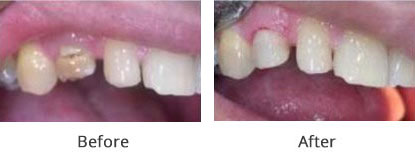
Dental Crowns Procedure (Same-Day Crowns)
At Sunny Family Dental, we are delighted to provide our patients with the option of same-day dental crowns. With this convenient service, you can have your dental crown created and fitted in just one visit, eliminating the need for multiple appointments. Say goodbye to the old, time-consuming process and enjoy the benefits of same-day crowns at our office.
When you visit us for a same-day crown, we’ll prepare and take a digital image of your tooth. You won’t have to deal with sticky or uncomfortable physical impressions anymore! This image will be used to create a 3D model for our on-site milling machine, which will make your new crown during your appointment.
Patients love our same-day crowns as they save time and hassle, eliminating the need for multiple appointments, physical molds, and temporary crowns. Our same-day crowns are a fantastic option for safeguarding and restoring teeth with cracks, wear, or weakness due to decay. Additionally, we can repair broken teeth and replace large fillings. If you are unhappy with the appearance of a tooth, a same-day crown can enhance the look of discolored or misshapen teeth in just one appointment.
Dental Crown Post Treatment Expectations
After the successful completion of the crown (restorative dentistry), it is not uncommon to feel some discomfort. mild pain when you chew, or sensitivity to temperature changes for a few days. Also, if your newly cemented crown feels too tall or your bite doesn’t feel right, you should contact your dentist.
Metal Crowns
The more precious metal or gold content in the metal the better the fit and better for the health of gums around the crown. Keep in mind fit is an important factor in sealing out the bacteria that tries to get between the crown and the tooth. possibly causing decay and premature failure of the crown.
Porcelain Crowns
All porcelain crowns are generally considered the most aesthetic choice since they closely resemble the color and appearance of your teeth. Porcelain continues to improve and in fact, there are newly developed porcelain materials, such as zirconium and empress 2 that can better withstand the forces of chewing. Porcelain crowns can give you the Hollywood smile that you are looking for.
Porcelain Fused to Metal Crowns
The third kind of crown has a porcelain exterior with a metal framework supporting it underneath. The porcelain gives you the desired aesthetic, and the metal framework provides better structural support making the porcelain much stronger. This type of porcelain-metal hybrid crown can be used to replace missing teeth in any area of the mouth, front or back. Again, as a rule (restorative dentistry), the more precious metal or gold content in the metal, the better the fit and better for the health of gums around the crown. An example of this great type of crown would be the “captek” crown.
All-resin dental crowns are less expensive than other crown types. However, they wear down over time and are more prone to fractures than porcelain-fused-to-metal crowns.
All-ceramic or all-porcelain dental crowns provide the best natural color match than any other crown type and may be more suitable for people with metal allergies. However, they are not as strong as porcelain-fused-to-metal crowns and they wear down opposing teeth a little more than metal or resin crowns. All-ceramic crowns are a good choice for front teeth.
Temporary versus permanent. Temporary crowns can be made in your dentist’s office whereas permanent crowns are made in a dental laboratory. Temporary crowns are made of acrylic or stainless steel and can be used as a temporary restoration until a permanent crown is constructed by the dental laboratory.
Cleaning Your Dental Crown
Please keep in mind that the longevity of your crown depends in large part on the materials in the crown. as well as your oral hygiene, diet and the health of the supporting tooth and gums. It is important to maintain all of your teeth with proper brushing and flossing.
The longevity and durability of your crown are directly related to the materials selected to make the crown. So let’s take a look at different options (restorative dentistry).
Dental Bridges
Dental bridges are used to replace one or more missing teeth in your mouth (restorative dentistry). Dental bridges are fixed, in that they are cemented on the supporting teeth, or in some cases fixed on the dental implant that has been placed next to the missing teeth.
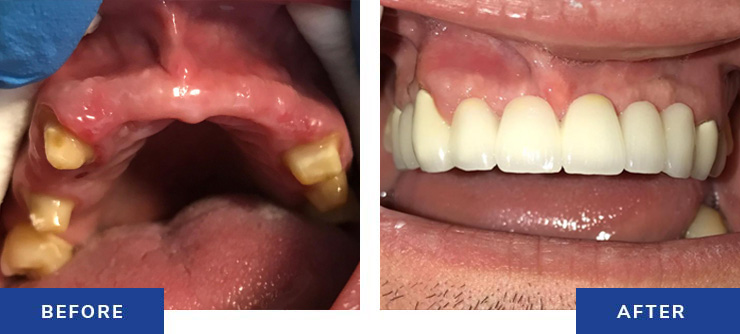
Importance of Replacing the Missing Teeth
Replacing the missing teeth will restore your ability to properly chew and speak besides its cosmetic advantage (Restorative Dentistry); in addition, the space caused by the missing teeth may allow the surrounding teeth to shift into that space. This shifting could cause a misalignment in your bite that can result in problems with your jaw joint. These shifted teeth are harder to clean, making them more susceptible to gum disease, decay or even additional tooth loss.
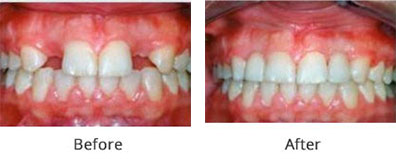
The Dental Bridge Treatment
It normally takes two or more visits for your Chino Hills dentist to complete your bridge. On your first visit the supporting teeth, which are typically the ones on either side of the missing tooth, are prepared. This is done to make room for the crowns that will slide over the supporting teeth. These crowns also serve as holders of the pontic, which is the missing tooth’s replacement.
Next, an impression of the supporting teeth is made so a dental laboratory can custom fit the bridge. Finally a temporary dental bridge is inserted to protect the supporting teeth as well as the space between them.
On your second visit (restorative dentistry) the permanent bridge is placed and adjusted to insure proper fit and function. If the fit of the bridge is satisfactory your dentist will proceed with permanently cementing the bridge into place.
Dental Bridge Post Treatment Expectations
After the successful completion of the bridge you may feel some discomfort, mild pain when biting or sensitivity to temperature changes for a few days. As advised by your dentist, you can take over-the-counter pain medicine, such as Advil that contains ibuprofen, to alleviate the discomfort. If these symptoms persist more than a few days, visit your dentist.
Cleaning Your Dental Bridge
The longevity of your dental bridge depends in large part on the quality of the material in the bridge, as well as your oral hygiene, diet and the health of the supporting teeth and gums. Please ask your dentist for proper brushing and flossing techniques.
Inlay Fillings
Inlays are custom fit fillings made in a laboratory. First, the decay is cleaned from your tooth and then an impression of the tooth is made and sent to the lab. In the interim a temporary filling is used to fill in the space and protect your tooth from fracture or further deterioration. It’s important that you avoid chewing or applying any stress to the temporary filling, as it may be fragile.
When the lab receives the impression from your dentist they will custom make your filling for your tooth. There are several types of materials they can use for the inlay.
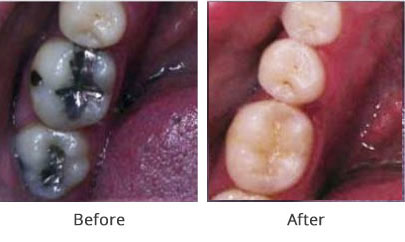
Porcelain Inlays
The first type of inlay is porcelain or ceramic material colored to match your tooth. In addition to being aesthetically pleasing the other benefits of porcelain or ceramic inlays are that they are also quite stain-resistant and hard.
Metal Inlays
The second type of inlay is made of a metal, such as gold. Metallic inlays are well known for their durability.
Composite Inlays
The final type of inlay is made of tooth colored composites. Like the porcelain inlays, composites are also very aesthetically pleasing. All three types of inlays are bonded or glued to your teeth with a special cement or glue. Keep in mind that you should stay away from eating on the site of the newly cemented inlay for at least 24 hours.
Onlays – Restorative Dentistry
Onlays protect teeth similarly to crowns, but conserve more natural tooth structure. Onlays should provide decades of service. Our Doctor has restored beauty and function to the teeth of thousands of patients through the placement of custom-crafted inlays and onlays (restorative dentistry).
Dental Veneer
Veneers are custom-made, tooth colored shells that are bonded to your teeth with dental cement or bonding adhesive. Veneers cover the front surfaces of your teeth and can help improve your appearance and smile by covering up a tooth that is discolored, misshaped, or worn down. Veneers can also close gaps between teeth or repair a chipped tooth.
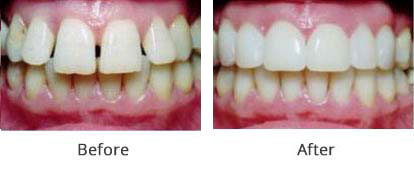
Types Of Veneers
Veneers can be made from several different types of materials. Generally, your dentist will help you decide which type is best for you.
- Porcelain veneers
- Lumineers
- Composite veneers
Porcelain veneers are the most common type of veneers. Porcelain has a very shiny surface that closely resembles your enamel and will give you a more natural and translucent appearance. In addition, porcelain is stain resistant and it is also very friendly to your gums.
Veneer Treatment
It normally takes two visits for your dentist to complete your veneers. If preparation is necessary, on the first visit your dentist will use a dental hand piece to shape and prepare the teeth so the veneers will properly fit over them. Next, an impression of your teeth is taken and temporary veneers may be placed to protect the prepared teeth. The impression of your teeth is then sent to a dental laboratory where custom-fit veneers are made. During this first visit your dentist will also help you choose the proper shade for the color of your veneers.
In most cases, on your second visit the veneers are placed and, if necessary, adjusted to create a proper fit. If the fit, shape and color of the veneers are satisfactory, your dentist will proceed with permanently cementing them into place.
Repairing & Caring For Dental Veneers
Porcelain Veneers are usually not repairable should they chip or crack so you should attempt to avoid biting directly on small hard items such as hard candies, your fingernails, or pens. And you should never chew on anything cold and hard such as ice.
If you grind your teeth during the day or at night, your Chino Hills dentist may recommend a night guard to protect your veneers from these grinding forces. A night guard is a plastic cover that fits over your teeth to deflect hard forces. Night guard will also increase the longevity of your veneers.
Complete Dentures – Restorative Dentistry
Like many things in life, the importance of something is never truly appreciated until it is gone. If you’ve lost your teeth, whether due to injury, tooth decay or gum disease, you surely understand. The good news is that you have options to replace them. Dentures can help restore your way of life by helping you with day-to-day functions, such as eating and speaking, as well as help restore your confidence by improving your appearance and smile.
Making a denture is a process that usually takes about 6-12 weeks, however this can vary from one patient to another.
It also depends on the type of the denture and the technique your dentist or the laboratory technician uses to make the denture.
Denture Treatment Process
Complete dentures are made using your mouth as a model. First, your dentist will take an accurate impression of the upper and lower arches of your mouth. This impression is then sent to the dental laboratory.
At the next visit, your Chino Hills dentist will record the relationship of the arches that best resembles your original bite and helps you select the shape and color of the denture teeth and gums. Keep in mind the color of everyone’s gums varies. To make a more natural denture your dentist will help you choose the shade that best matches your mouth.
In the subsequent visits, your dentist in Chino Hills will adjust your bite, test your speech and check the appearance and functionality of the denture teeth and gums. After a satisfactory fit and appearance is achieved, the denture is then sent back to the laboratory for fabrication.
It also depends on the type of the denture and the technique your dentist or the laboratory technician uses to make the denture.
Denture Complications
While every effort is made to make a good and functional denture, please keep in mind that there is no such thing as a perfect denture. After delivery of the denture, it may require a few adjustment visits and some time for you and your new denture to adapt to each other. The most important point to remember is that adjusting to your new dentures is a process; it sometimes takes a little time to get used to.
A new denture can also alter your eating and speaking habits and it may require a bit of practicing before you get comfortable.
Finally, due to differences in the shapes of the jaws and the strong muscle movement of the tongue and cheek, a lower denture may be harder to keep in the mouth compared to an upper denture.
In the subsequent visits, your dentist in Chino Hills will adjust your bite, test your speech and check the appearance and functionality of the denture teeth and gums. After a satisfactory fit and appearance is achieved, the denture is then sent back to the laboratory for fabrication.
It also depends on the type of the denture and the technique your dentist or the laboratory technician uses to make the denture.
Different Denture Options
There are new advances in making dentures. One such advance is an implant-supported denture that stabilizes the denture. This kind of denture requires the placement of implants in your mouth before making the denture.
It also depends on the type of the denture and the technique your dentist or the laboratory technician uses to make the denture.
Partial Dentures – Restorative Dentistry
Partial dentures are replacement teeth for people who have lost one or more of their teeth. Partial dentures can be taken in and out of the mouth and consist of a denture base, which closely resembles the color of your gums and denture teeth, which are attached to a supporting framework. The partial denture then attaches to the existing teeth via a clasp or some other retentive device.
Partial dentures are made using a model of your mouth
Making a partial denture requires about 6-8 weeks, however this can vary from one patient to another. It also could depend on the type of denture and the technique your dentist or the laboratory technician uses.
Partial Denture Treatment
The first step in making a partial denture is the preparation of the teeth. During this phase your dentist may prepare the teeth that the partial denture will use for support. Next, your Chino Hills dentist will take an accurate impression of the upper and lower arches of your mouth and records your bite. The impressions are then sent to the dental laboratory.

If you want to learn more about the restorative dentistry and advanced diagnostic tools we use in our office, feel free to call us at (909) 606-4337 or Book an appointment.





